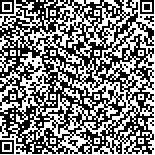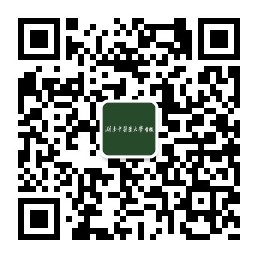| 引用本文: |
易曼婷, 黄羚, 李东芳.乳腺癌伴焦虑抑郁的中医证型分布及相关危险因素预测模型的研究[J].湖南中医药大学学报,2024,44(11):2061-2068[点击复制] |
|
| |
|
|
| 本文已被:浏览 1560次 下载 783次 |
| 乳腺癌伴焦虑抑郁的中医证型分布及相关危险因素预测模型的研究 |
| 易曼婷,黄羚,李东芳 |
| (湖南中医药大学, 湖南 长沙 410208;怀化市卫生健康委员会, 湖南 怀化 418000;湖南省肿瘤医院, 湖南 长沙 410013) |
| 摘要: |
| 目的 通过病例研究,分析乳腺癌伴焦虑、抑郁状态患者的中医证型及相关因素,为乳腺癌伴焦虑、抑郁状态的危险因素分析和辨证分型提供参考。方法 采用问卷调查法,根据诊断、纳入及排除标准选择乳腺癌伴焦虑、抑郁患者150例,参照中医证型诊断标准进行辨证分型,通过Logistic回归分析乳腺癌伴焦虑和伴抑郁的影响因素,并用受试者工作特征(receiver operating characteristic, ROC)曲线分析预测价值。结果 150例乳腺癌患者中,52%伴有焦虑,62%伴有抑郁,14%同时伴有焦虑和抑郁。伴焦虑和伴抑郁的患者中,气滞证占比最高,分别为48.72%和59.14%。Logistic回归分析显示:已婚为焦虑及抑郁的保护因素;育有2个及以上孩子、病程时长6个月内、有放疗、临床分期Ⅲ~Ⅳ期为焦虑程度的危险因素;有放疗、临床分期Ⅲ~Ⅳ为抑郁程度的危险因素。ROC曲线显示:焦虑程度预测模型的曲线下面积(area under the curve, AUC)为0.92,敏感度为0.85,特异度为0.85,准确率为0.85;抑郁程度预测模型的AUC为0.77,敏感度为0.75,特异度为0.73,准确率为0.74。结论 乳腺癌伴焦虑、抑郁患者以气滞证为主;婚姻状况、生育史、病程、放疗及临床分期为乳腺癌患者焦虑程度的影响因素,婚姻状况、放疗、临床分期为乳腺癌患者抑郁程度的影响因素,根据上述因素建立的预测模型有较好的预测价值。 |
| 关键词: 乳腺癌 焦虑 抑郁 中医证型 危险因素 预测模型 临床研究 |
| DOI:10.3969/j.issn.1674-070X.2024.11.017 |
| 投稿时间:2024-10-16 |
| 基金项目:中西医结合防治肿瘤重点研究室(20230330-1005);湖南省中医药管理局重点项目(C2022007);湖南省中医药领军人才和学科带头人(湘中医药〔2022〕4号)。 |
|
| Chinese medicine pattern distribution and risk factor prediction model in breast cancer with anxiety and depression |
| YI Manting, HUANG Ling, LI Dongfang |
| (Hunan University of Chinese Medicine, Changsha, Hunan 410208, China;Huaihua Municipal Health Commission, Huaihua, Hunan 418000, China;Hunan Cancer Hospital, Changsha, Hunan 410013, China) |
| Abstract: |
| Objective To analyze the Chinese medicine patterns and related factors of breast cancer patients with anxiety and depression through case studies, so as to provide a reference for identifying risk factors and pattern differentiation in such patients. Methods Questionnaire method was used to select 150 breast cancer patients with anxiety and depression following the diagnosis, inclusion and exclusion criteria. Pattern differentiation was conducted according to the diagnostic criteria of Chinese medicine patterns. Logistic regression was used to analyze influencing factors for anxiety and depression in patients with breas cancer, with the predictive value assessed using the receiver operating characteristic (ROC) curves. Results Among the 150 breast cancer patients, 52% experienced anxiety, 62% experienced depression, and 14% experienced both anxiety and depression. Qi stagnation was the most prevalent pattern type among the patients with anxiety (representing 48.72% of cases) and with depression (accounting for 59.14% of cases). Logistic regression analysis revealed that being married served as a protective factor against both anxiety and depression; having two or more children, a disease duration of 6 months or less, undergoing radiotherapy, and being at clinical stage III-IV were risk factors for anxiety level; similarly, undergoing radiotherapy and being at clinical stage Ⅲ-Ⅳ were also risk factors for depression level. The ROC curve analysis showed that the predictive model for anxiety level had an area under the curve (AUC) of 0.92, a sensitivity of 0.85, a specificity of 0.85, and an accuracy of 0.85; the predictive model for depression level had an AUC of 0.77, a sensitivity of 0.75, a specificity of 0.73, and an accuracy of 0.74. Conclusion Breast cancer patients with anxiety and depression predominantly present with qi stagnation pattern. Marital status, reproductive history, disease duration, radiotherapy, and clinical stage are the factors influencing the anxiety level of patients with breast cancer, while marital status, radiotherapy, and clinical stage affect their depression level. The prediction model established based on the above factors demonstrates better predictive value. |
| Key words: breast cancer anxiety depression Chinese medicine pattern risk factor predictive model clinical research |
|

二维码(扫一下试试看!) |
|
|
|
|




